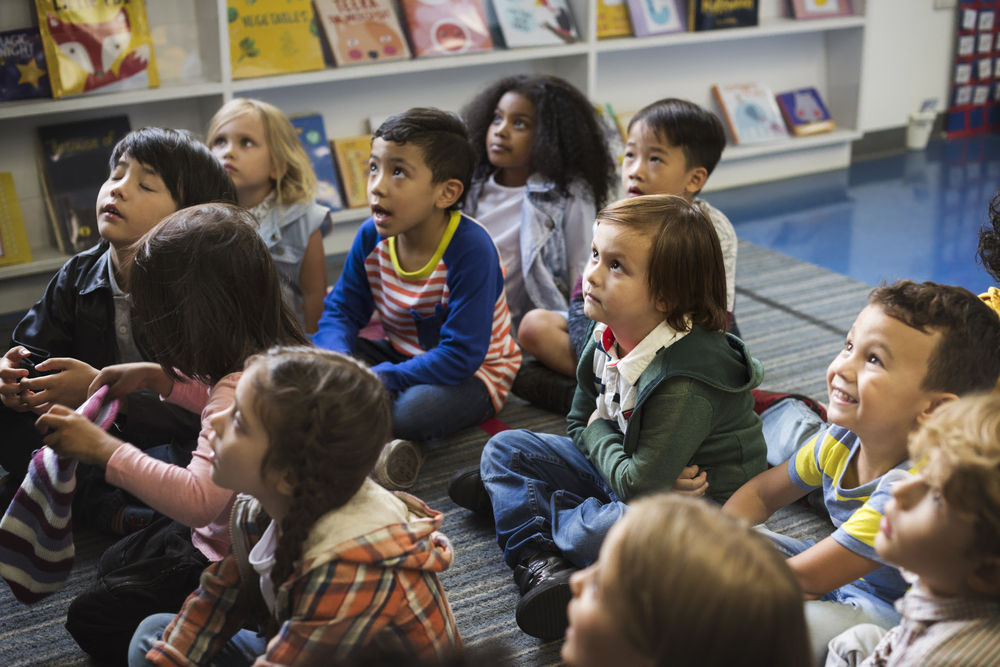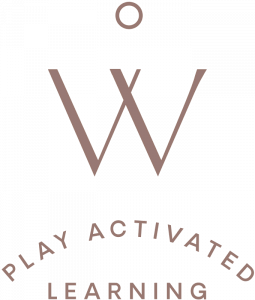How long could you sit crisscross-applesauce before you needed to move? For me, the answer is: about 20 seconds max! Unless I’m deeply, deeply engaged, I can’t be still. Even while watching something absolutely fascinating on TV, I may start with my legs folded underneath me, but it’s not long before my legs are stretched out on the coffee table. Next, I’m lying on my right side and, finally, on my left side. And that’s all during an hour-long program. At the airport, waiting to board or outside waiting for an Uber, I’m the one rocking side to side.
In other words, I find it very difficult to remain motionless, even in a comfortable position. And, for many, crisscross-applesauce is not a comfortable position.
I’ve written before about the folly of requiring children to sit still in order to learn. But requiring them to sit crisscross-applesauce – cross-legged, with the back straight and hands in the lap and eyes forward (now being called “whole-body listening”) – brings the issue to another level.
The idea, of course, is that children sitting like this will pay greater attention to the task at hand. That they’ll be more capable of listening. But wiggling and moving don’t necessarily mean they’re not listening. In fact, being required to sit like this may mean they pay even less attention, because crisscross-applesauce is a particularly challenging position. And that means it can require most of a child’s concentration.
If sitting crisscross-applesauce is one of the major dictates of an early childhood setting, it gives the child who’s incapable of complying one more chance to be seen as misbehaving. To be breaking the rules. But I propose that we examine why such rules exist in the first place—rules that run contrary to what we know about children and, now, about fidgeting. If we understand that children are much more likely to be engaged when they’re comfortable, why insist that they assume a position that perhaps isn’t comfortable at all, often for long minutes at a time? Tradition is simply not a good enough reason.

So, what are the alternatives?
Well, as pediatric occupational therapist Christy Isbell once said to me, in an interview for BAM Radio Network: “Who’s to say we have to sit down to learn? Why can’t we stand to learn? Why can’t we lay on the floor on our tummies to learn? Why can’t we sit in the rocking chair to learn? There are lots of other simple movement strategies. Just changing the position can make a big difference.”
So, why not offer children options? One major benefit is that they can choose the one that best meets their needs. And because they’re given that responsibility and choice, they will take the decision seriously, and there will be fewer actual behavioral issues. This is how self-regulation is acquired – not by being ordered to sit still.
Often, early childhood teachers argue that they must get children used to sitting because the children will have to sit in kindergarten and beyond. Unfortunately, it’s true that until policymakers begin paying attention to the research and opt for an education system that aligns with how kids learn, children will have to become accustomed to sitting in school. But it’s also true that most kids will eventually have to learn to drive. That doesn’t mean we should stick them behind the wheel while they’re still preschoolers.
Learning to sit is a process that nature put in place. And that process involves movement, which allows children to develop their proprioceptive and vestibular systems. These are the senses that allow children to be able to sit. Surely, we can’t imagine that we have a better plan than nature’s.
Here are some recommendations, in addition to offering children choice:
- For circle time you might simply allow children to stand or walk as needed. When I’m doing a telephone interview or am on a business call, I walk from room to room because I think better when on my feet than on my seat.
- You might allow children to engage in a quiet activity, like coloring, as you read a story. A teacher once approached me following a keynote to show me what she’d drawn while listening to me speak. Despite having created a lovely drawing, it was evident she had indeed been listening to me.
- For each of the above suggestions, you can and should designate a specified area within which the children are allowed to stand or color; and that area should be within the circle. If you’re going to allow children to walk, designate a larger circle that will help prevent the other children from being distracted.
- If a child is unable to sit still while you’re reading a story or otherwise attempting to engage him or her, remember not to take it personally. Once you get to know each child as an individual, you’ll be able to determine who might need a stress ball, for example, or to sit on a balance ball.
- If you find yourself distracted by the children’s movement, it’s important to remember that, as adults, we should find it easier to make adjustments to our thinking than it is for young children to adopt behaviors that are beyond their control.
As far as crisscross-applesauce is concerned, the time has come to do away with this tradition. Honestly, there was never a time for it in the first place.
References
Beaty, Janice (2014) Preschool Appropriate Practices: Environment, Curriculum, and Development, Fifth Edition, Cengage.
Cadwell, Louise Boyd (2003). Bringing Learning To Life: The Reggio Approach To Early Childhood Education. Teachers College.
Pica, Rae (2014). Toddlers Moving and Learning: A Physical Education Curriculum. Redleaf Press
Pica, Rae (2014). Preschoolers and Kindergartners Moving and Learning: A Physical Education Curriculum (Moving & Learning). Redleaf Press
Pica, Rae (2015). What If Everybody Understood Child Development?: Straight Talk About Bettering Education and Children′s Lives. Corwin
Pica, Rae (2019). Acting Out!: Avoid Behavior Challenges with Active Learning Games and Activities. Redleaf Press
Pica, Rae (2020). What If We Taught the Way Children Learn?: More Straight Talk About Bettering Education and Children′s Lives. Corwin
Pica, Rae (2022). Spark a Revolution in Early Education: Speaking Up for Ourselves and the Children. Redleaf Press


